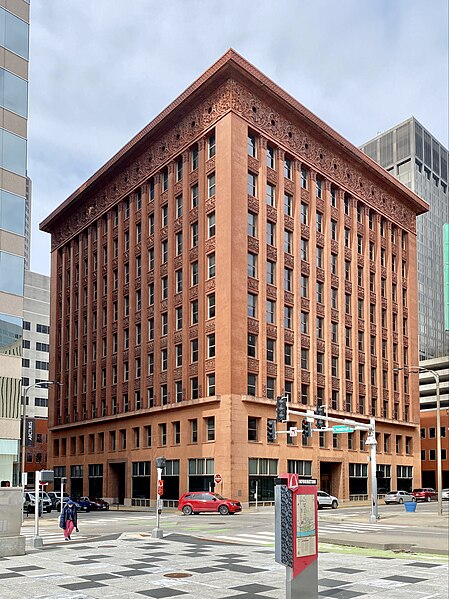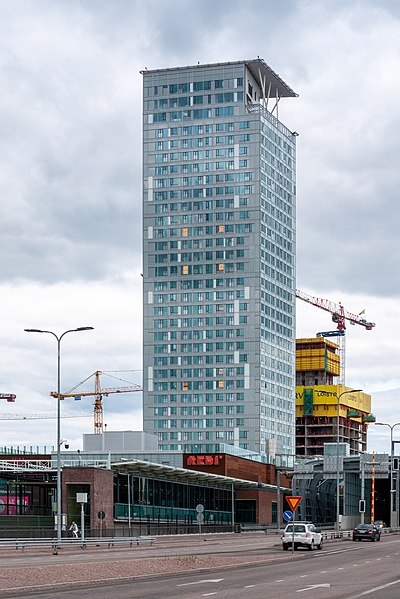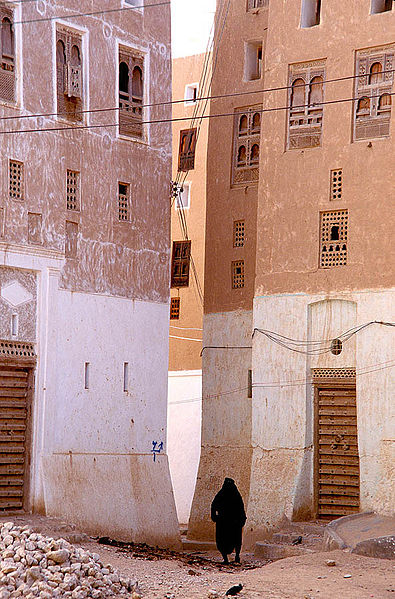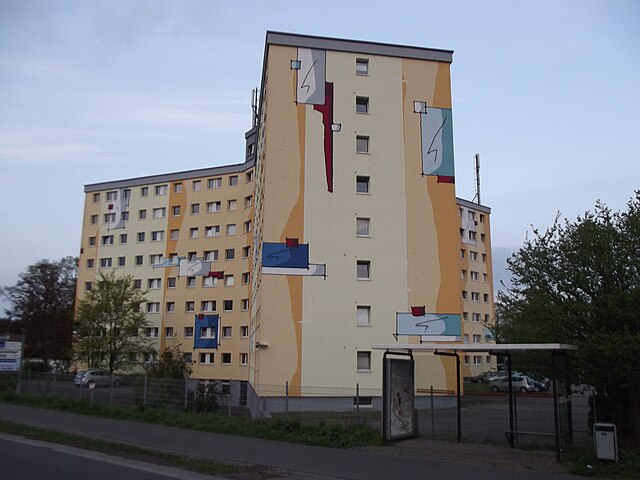A skyscraper is a tall continuously habitable building having multiple floors. Modern sources define skyscrapers as being at least 100 meters (330 ft) or 150 meters (490 ft) in height, though there is no universally accepted definition, other than being very tall high-rise buildings. Historically, the term first referred to buildings with between 10 and 20 stories when these types of buildings began to be constructed in the 1880s. Skyscrapers may host offices, hotels, residential spaces, and retail spaces.
Completed in 2009, the Burj Khalifa, in Dubai, United Arab Emirates is currently[update] the tallest building in the world, with a height of 829.8 meters (2,722 ft). The setbacks at various heights are a typical skyscraper feature.
By some measures, what came to be known as a "skyscraper" first appeared in Chicago with the 1885 completion of the world's first largely steel-frame structure, the Home Insurance Building. It was demolished in 1931.
Built in 1864, Oriel Chambers in Liverpool is the world's first metal framed glass curtain walled building. The stone mullions are decorative.
Wainwright Building (1891) in St. Louis
A tower block, high-rise, apartment tower, residential tower, apartment block, block of flats, or office tower is a tall building, as opposed to a low-rise building and is defined differently in terms of height depending on the jurisdiction. It is used as a residential, office building, or other functions including hotel, retail, or with multiple purposes combined. Residential high-rise buildings are also known in some varieties of English, such as British English, as tower blocks and may be referred to as MDUs, standing for multi-dwelling units. A very tall high-rise building is referred to as a skyscraper.
A newer high-rise tower in downtown New Brunswick, New Jersey, U.S., known as the Hub City. High-rise towers often anchor central business districts.
The Majakka high-rise building in Kalasatama, Helsinki, Finland
These tower blocks were built in Shibam, Yemen, in the 16th century, and are the tallest mudbrick buildings in the world, some more than 30 metres (98 ft) high.
A residential block in Steinfurt, Westphalia, Germany, forming a "Y"

![Completed in 2009, the Burj Khalifa, in Dubai, United Arab Emirates is currently[update] the tallest building in the world, with a height of 829.8 met](https://upload.wikimedia.org/wikipedia/en/thumb/9/93/Burj_Khalifa.jpg/342px-Burj_Khalifa.jpg)






